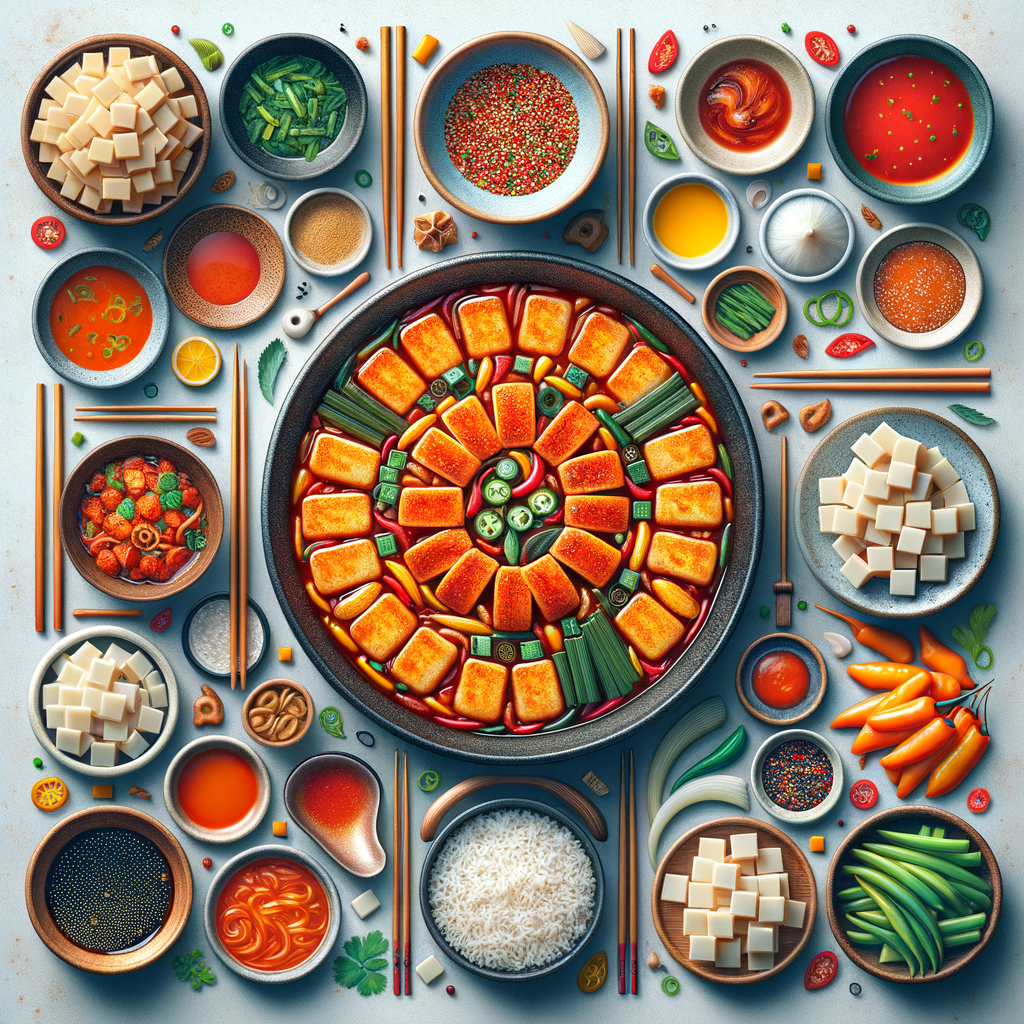🔥 Introduction to Tteokbokki
Tteokbokki, a beloved Korean street food, is a dish that has captured the hearts and taste buds of many around the world! 😍 Originating from Korea, these spicy rice cakes are not just a meal; they are a cultural experience that embodies the rich history and flavors of Korean cuisine. In this post, we’ll explore the origins, recipe, regional features, taste profile, and cultural significance of Tteokbokki.
🌍 The Origin of Tteokbokki
Historical Background
The roots of Tteokbokki can be traced back to the Joseon Dynasty (1392–1910), where it was originally served as a royal dish. The earliest version was called ‘tteok jjim,’ which consisted of steamed rice cakes with various sauces. However, the modern version we know today began to take shape in the 1950s when gochujang (Korean chili paste) was introduced as an ingredient. This transformation turned Tteokbokki into a spicy delight that quickly gained popularity among the masses.
Evolution Over Time
As time progressed, Tteokbokki evolved from a royal delicacy to a popular street food. It became a staple in Korean markets and food stalls, often enjoyed as a quick snack or meal. Today, it is commonly found in various forms and flavors across Korea, making it an essential part of Korean culinary culture.
🍽️ The Recipe for Tteokbokki
Ingredients You’ll Need
To make authentic Tteokbokki at home, you will need the following ingredients:
- 300g of chewy rice cakes (tteok)
- 3 tablespoons of gochujang (Korean chili paste)
- 1 tablespoon of gochugaru (Korean chili flakes)
- 2 tablespoons of sugar
- 1 tablespoon of soy sauce
- 4 cups of water or anchovy broth
- 1/2 onion, sliced
- 1 green onion, chopped
- Optional: fish cakes, boiled eggs, or vegetables
Step-by-Step Cooking Instructions
1. **Prepare the Rice Cakes**: If using dried rice cakes, soak them in warm water for about 30 minutes until they soften.
2. **Make the Sauce**: In a pot, mix gochujang, gochugaru, sugar, soy sauce, and water or anchovy broth. Stir well to combine.
3. **Cook the Sauce**: Bring the sauce to a boil over medium heat and add sliced onions. Let it simmer for about 5 minutes until the onions soften.
4. **Add Rice Cakes**: Add the softened rice cakes to the pot and stir gently to coat them in the sauce. Cook for about 10-15 minutes until the rice cakes become tender and absorb the flavors.
5. **Finish with Add-ins**: If desired, add fish cakes or boiled eggs during the last few minutes of cooking. Garnish with chopped green onions before serving.
🌶️ Regional Features and Variations
Diverse Styles Across Korea
Tteokbokki is not just one dish; it has numerous regional variations that reflect local tastes and ingredients:
- Soon-Dae Tteokbokki: Found in Busan, this version includes blood sausage (soondae) as an additional ingredient.
- Mukbang Tteokbokki: This style is popularized by food vloggers who indulge in large portions while showcasing different toppings like cheese or seafood.
- Creamy Tteokbokki: A modern twist where cream or cheese is added for a richer flavor profile.
The Influence of Street Food Culture
Korean street food culture plays a significant role in how Tteokbokki is enjoyed. Vendors often serve it with skewers of fish cakes or boiled eggs on the side. The vibrant atmosphere of street markets enhances the experience as people gather to savor this delicious dish together!
🍜 Taste Profile and Experience
A Symphony of Flavors
The taste profile of Tteokbokki is truly unique! It combines sweet, spicy, and savory elements that create an explosion of flavors in every bite. The chewy texture of rice cakes contrasts beautifully with the thick gochujang sauce that clings to each piece.
The sweetness from sugar balances out the heat from gochujang and gochugaru, making it approachable even for those who might be wary of spicy foods. When paired with fish cakes or vegetables, it adds layers of flavor that elevate the dish even further!
The Eating Experience
Tteokbokki is often enjoyed hot and fresh from street vendors or homemade kitchens. The experience is enhanced by sharing it with friends or family while enjoying lively conversations. Whether you’re dipping your chopsticks into a bubbling pot or savoring each bite from a paper cup at a bustling market stall, Tteokbokki brings people together! 🥳
🎉 Cultural Significance of Tteokbokki
A Symbol of Korean Identity
Tteokbokki is more than just food; it represents Korean identity and culture. It’s often associated with childhood memories for many Koreans who grew up enjoying this dish after school or during festivals.
The popularity of Tteokbokki has also led to its inclusion in various media forms such as K-dramas and variety shows, further cementing its status as an iconic dish within Korean culture.
A Dish for All Occasions
Tteokbokki is versatile enough to be enjoyed at any time—be it a casual snack on a rainy day or part of a festive celebration! Its adaptability has allowed it to remain relevant through changing times while still holding onto its traditional roots.
Tteokbokki, KoreanCuisine, StreetFood, FoodCulture, SpicyDelight
